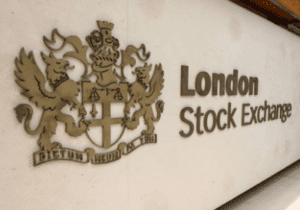What are Dividend Stocks?
Lots of investors in the UK opt for dividend stocks, as they allow you to earn regular payments on top of capital gains. This is because the company in question will distribute some of its profits to those that hold shares. Although this averages 3-4% in the UK, the specific amount will vary from company-to-company.
In this guide, we explore the ins and outs of how dividend stocks work. We also explain how you can add dividend-paying companies to your investment portfolio, and what you need to look out for prior to parting with your money.
-
-
What are Dividends?
In its most basic form, dividends allow companies to share some of their profits with stockholders. That is to say, if you hold at least one share with the company in question – and the firm does distribute dividends, you will be entitled to your proportion.
As we cover in more detail later, the specific amount that you receive will depend on several factors. At the forefront of this is the performance of the company. In other words, if the company that you hold shares with is performing well – then this should be reflected in the size of its dividend payment.
In rarer cases, you will sometimes find that companies increase the size of their dividend when its share price goes down, as this has the desired impact of offsetting some of the losses encountered by shareholders.
In terms of the specifics, dividends are paid as cash. As you will be using an online broker to buy shares, the funds will be added to your brokerage account as and when they are distributed by the company. You can re-invest the dividends into other firms, or simply withdraw them out as cash. Best of all, dividend stocks are a great way to earn passive income. This is because you will not need to actively trade the stocks to benefit from the payment.
How do Dividend Stocks Work?
Let’s look at a basic example to see how dividend stocks actually work in practice.
- You are holding 100 BP shares
- The company reports better-than-expected results, so it decides to pay a dividend yield of 5%
- This works out at 16p per share
- As you hold 100 shares, you will receive a total payment of £16
- The cash is paid into the brokerage account that you are holding the shares
In terms of how often dividend stocks release a payment, this is usually every three or six months. However, it is important to note that there is never any guarantee that the company will continue to pay dividends indefinitely – especially if it is running into financial problems. As such, if the company decides to suspend its dividend policy, you will not receive anything until further notice.
Which Companies pay Dividends?
First and foremost, not all companies pay dividends. In fact, some of the largest companies in the world opt against it, as they prefer to focus on increasing shareholder value in the form of capital gains. This includes the likes of Facebook, Amazon, Netflix, and Google.
On the flip side, there are thousands of publicly-listed companies that do pay dividends – so you can easily create a portfolio of income-generating stocks. This includes hundreds of firms on the London Stock Exchange, as well as international markets like NASDAQ and New York Stock Exchange.
When do Dividend Stocks Announce Distribution Details?
There is a standard process that companies take when deciding whether or not they will be paying dividends. The board of directors will meet to discuss the current state of the company, and if they decide to authorize dividends, they will ascertain how much to pay. This goes on behind the scenes, so you won’t know the outcome until the company makes an announcement.
With that being said, there are three dates in particular that you need to be made aware of:
- Declaration Date: The declaration date is simply the date that the company in question announces [A] whether or not it will be paying dividends [B] the size of the dividend and [C] the ex-dividend date.
- Ex-Dividend Date: The ex-dividend date is the date that new shareholders will not be entitled to the upcoming payment. After all, it wouldn’t be fair is somebody purchased shares just to receive a juicy dividend payment, and then sell the shares straight away. For example, let’s say that the ex-dividend date is July 1st. As long as you were a shareholder before this date, you will be entitled to the dividends.
- Payment Date: This is simply the date that the company will distribute the dividends. Unless you are an institutional investor, this will be paid to the stock broker that you are holding the shares with. Then, the broker will distribute each dividend payment to the respective beneficiary.
It is also important to make reference to what happens to the share price of a company when it goes ‘ex-dividend’. Although not an exact science, the share price of the dividend stock will typically go down at a rate proportionate to the payment. For example, if Royal Mail decides to pay a dividend of 4%, in theory, this would mean that the price of its stocks would also drop by 4%. This is because new buyers of the shares are missing out on the payment.
What Should I do With my Dividend Payments?
In a nutshell, you have two options when you receive a dividend stock payment. Firstly, you might decide to treat your dividend stocks as passive income, meaning that you withdraw the cash as and when it is paid. If you have a sizable amount of money invested in the stocks, then this might be enough to cover your everyday living costs. However, you would need to have a significant number of shares for this to be possible – as UK companies average a dividend yield of 3-4%.
The other – and potentially more suitable option for you is to re-invest the dividends. This is crucial if you are looking to grow your wealth over a long period of time, as you will benefit from the fruits of ‘compound interest‘. For those unaware, this is where you earn ‘interest on the interest’ – which is exactly what will happen if you continuously re-invest your dividends over a number of years.
To illustrate how each of the two options can dictate how quickly your money grows, check out the two examples listed below.
Example 1: Withdrawing Your Dividends
To keep things simple, let’s suppose that you invest £10,000 into a dividend stock. Let’s also suppose that the company pays a fixed dividend yield of 4% per year – and it does so for 25 years.
If you were to withdraw your dividend payments as and when they are paid, you would receive £400 annually. For as long as the yield stays at 4%, your money will never grow past the £10,000 mark – as you always withdraw the dividends out as cash.
Example 2: Re-Investing Your Dividends
Let’s stick the same example as above – where you invest £10,000 into a dividend stock that pays a yield of 4% for 25 years. Only this time, you are going to purchase more stocks with the dividend payments that you receive. For example, you will receive £400 in year one, meaning that you will own £400 worth of an additional shares.
This means that in the following year, your 4% yield will not be based on £10,000 – but £10,400. This process is repeated each and every year – with the number of shares you own increasing continuously.
If you continued to do this for 25 years, – and assuming that the company keeps paying a yield of 4%, your £10,000 investment would then be worth just over £27,000. This does not include the future value of the stocks themselves, as in theory, you would expect them to be worth substantially more in 25 years time. This is why you should consider re-investing your dividend payments as opposed to withdrawing them out.
With that said, you don’t need to purchase shares in the same company. On the contrary, you can purchase other dividend stocks. In doing so, you’ll stand the best chance possible of creating a diversified portfolio!
How do I Choose Dividend Stocks?
When it comes to actually selecting dividend stocks to invest in, you typically have two options at your disposal. You can either choose individual stocks on a DIY basis, or opt for an ETF.
Choosing Individual Stocks
If you have a bit of experience in the stocks and shares space, you might want to consider selecting your own companies. This will require you to perform in-depth research on the organization. In doing so, you’ll be able to make an informed decision as to whether or not the company is worth investing in.
After all, you should never invest in a firm just because it pays dividends. On the contrary, you need to ensure that the company has a bright future ahead of it. Crucially, you don’t want to make the mistake of focusing exclusively on dividends, as you also need to factor in the value of the shares themselves.
For example, although BP paid a whopping 10.2% dividend yield in 2019, it’s shares went down by more than this during the same period! The most effective strategy that you can take if you opt for a DIY investment process is to create a highly diversified portfolio of dividend stocks. Not only should this includes multiple companies, but you should select stocks from several different industries. That way you won’t be overexposed to a single sector.
Dividend Stock ETF
If you have little to no experience of how stocks and shares work – or you simply want to invest in a passive manner, it might be worth considering an ETF (exchange-traded fund). For those unaware, ETFs allow you to invest in a basket of assets through a single investment. In the case of dividend stocks, this means that you can invest in a diversified portfolio of income-generating companies by placing just one trade.
A prime example of this is the SPDR® S&P UK Dividend Aristocrats UCITS ETF. The ETF in question contains lots of dividend-paying companies that are listed on the London Stock Exchange. This includes the likes of SSE, British American Tobacco, United Utilities Group, and TP ICAP.
Crucially, the ETF provider will personally buy and hold the shares on behalf of its investors. This means that you will be entitled to dividends as and when they are paid by the respective company. As ETFs hold dozens, if not hundreds of companies within their basket, dividends are typically released periodically.
For example, you might receive your share of dividends every three months. It is important to note that the value of the ETF will go up and down on the exchange it is listed on. This is dependent on how the dividend stocks within its portfolio perform. In other words, if the value of the shares goes up, as will the ETF.
How to Invest in Dividend Stocks Today – Step-by-Step Walkthrough
If you like the sound of what dividend stocks offer for your long term investing goals, we are now going to show you how you can get started. In fact, by following the step-by-step guidelines outlined below, you could be in possession of a dividend paying stock in less than 10-15 minutes!
Step 1: Join a UK Stock Broker
If you want to invest in dividend stocks from the comfort of your home, you will need to join a UK stock broker. The good news is that there are hundreds of UK-based share dealing platforms that are regulated by the Financial Conduct Authority (FCA). With that said, this can make it challenging to know which broker to sign up with.
If you’re planning to do some independent research, below you will find some of the questions that you should be asking of the broker:
- Is the broker regulated by the FCA?
- What dividend stock will you be able to trade?
- Does the broker offer dividend stock ETFs?
- How much does the broker charge in trading commissions, fees, and overnight financing
- What payment methods does the broker support?
- Are there any minimum requirements on deposits, account balances, or withdrawals?
If you don’t have time to perform your own research, below we have listed our two best-rated dividend stock brokers of 2021. Both brokers are regulated by the FCA, allow you to deposit and withdraw funds with a UK debit/credit card or bank account, and give you instant access to hundreds of dividend-paying stocks and ETFs.
1. IG – Trusted UK Stock Broker With Competitive-Fees
IG is also worth considering in your hunt for a UK-based share dealing platform. The broker was first launched in 1974, so naturally, it has an excellent reputation in the online brokerage space. In fact, it now has over 178,000 clients using the platform.
In terms of its share dealing services, IG offers a flat-fee pricing model. This starts at £8 per trade – which you will pay when you buy shares, and again when you sell them. If you are able to place three or more trades in the previous month, the share dealing charge goes down to just £3. As and when dividends are paid, IG will update your cash account balance.
With more than 10,000 companies listed at IG, you will be able to create a huge portfolio of dividend stocks. Alternatively, IG also gives you access to ETFs if you want to diversify through a single trade. If you do like the sound of IG, the platform allows you to open an account with a minimum deposit of £250. You can fund your account with a debit/credit card or UK bank account. Take note, IG charges 0.5% and 1% on MasterCard and Visa transactions, respectively.
Pros
- Trusted UK broker with a long-standing reputation
- Good value share dealing services
- Leverage and short-selling also available
- Spread betting and CFD products
- Access to UK and international markets
- Great research department
Cons
- Minimum deposit of £250
- US stocks have a $15 minimum commission
The Verdict
Dividend-paying stocks are highly sought after by UK investors, as they provide income on two fronts. This includes the growth that you can achieve when the company increases its share price, as well as the dividend payments themselves. The good news is that you now have access to hundreds of FCA-regulated brokers that offer dividend stocks. If you have little to no experience of choosing companies on a DIY basis, it might be worth considering an ETF. In doing so, you can invest in dozens of dividend-paying firms through a single trade.
FAQs
What are dividend stocks?
As the name suggests, dividend stocks are simply publicly-listed companies that pay dividends. You will be entitled to your share of any dividends paid, proportionate to the number of shares you own.
How much do dividends normally pay?
There really is no hard and fast answer to this question, as it can vary quite considerably from company-to-company. For example, while BP paid an average annualized yield of 10.2% last year, other companies pay less than 2%.
Does CFD stocks pay dividends?
If you trade CFD stocks instead of buying shares in the traditional sense,you won't be entitled to dividends. This is because you do not actually own the stocks. Instead, you are speculating on the future value of the company's share price.
What fees are associated with dividend stocks?
Most online stock brokers will charge you a share dealing charge when you buy dividend stocks. Some go one step further by also charging an annual dealing fee.The good news is that new-age brokers allow you to buy dividend stocks without paying any fees at all.
What is the minimum investment I can make in dividend stocks?
This will depend on the UK share dealing platform that you sign up with.
Kane Pepi
View all posts by Kane PepiKane Pepi is a British researcher and writer that specializes in finance, financial crime, and blockchain technology. Now based in Malta, Kane writes for a number of platforms in the online domain. In particular, Kane is skilled at explaining complex financial subjects in a user-friendly manner. Academically, Kane holds a Bachelor’s Degree in Finance, a Master’s Degree in Financial Crime, and he is currently engaged in a Doctorate Degree researching the money laundering threats of the blockchain economy. Kane is also behind peer-reviewed publications - which includes an in-depth study into the relationship between money laundering and UK bookmakers. You will also find Kane’s material at websites such as MoneyCheck, the Motley Fool, InsideBitcoins, Blockonomi, Learnbonds, and the Malta Association of Compliance Officers.
WARNING: The content on this site should not be considered investment advice and we are not authorised to provide investment advice. Nothing on this website is an endorsement or recommendation of a particular trading strategy or investment decision. The information on this website is general in nature, so you must consider the information in light of your objectives, financial situation and needs. Investing is speculative. When investing your capital is at risk. This site is not intended for use in jurisdictions in which the trading or investments described are prohibited and should only be used by such persons and in such ways as are legally permitted. Your investment may not qualify for investor protection in your country or state of residence, so please conduct your own due diligence or obtain advice where necessary. This website is free for you to use but we may receive a commission from the companies we feature on this site.
Buyshares.co.uk provides top quality insights through financial educational guides and video tutorials on how to buy shares and invest in stocks. We compare the top providers along with in-depth insights on their product offerings too. We do not advise or recommend any provider but are here to allow our reader to make informed decisions and proceed at their own responsibility. Contracts for Difference (“CFDs”) are leveraged products and carry a significant risk of loss to your capital. Please ensure you fully understand the risks and seek independent advice. By continuing to use this website you agree to our privacy policy.
Trading is risky and you might lose part, or all your capital invested. Information provided is for informational and educational purposes only and does not represent any type of financial advice and/or investment recommendation.
Crypto promotions on this site do not comply with the UK Financial Promotions Regime and is not intended for UK consumers.
BuyShares.co.uk © 2025 All Rights Reserved. UK Company No. 11705811.
We use cookies to ensure that we give you the best experience on our website. If you continue to use this site we will assume that you are happy with it.Scroll Up
 In its most basic form, dividends allow companies to share some of their profits with stockholders. That is to say, if you hold at least one share with the company in question – and the firm does distribute dividends, you will be entitled to your proportion.
In its most basic form, dividends allow companies to share some of their profits with stockholders. That is to say, if you hold at least one share with the company in question – and the firm does distribute dividends, you will be entitled to your proportion. If you have a bit of experience in the stocks and shares space, you might want to consider selecting your own companies. This will require you to perform in-depth research on the organization. In doing so, you’ll be able to make an informed decision as to whether or not the company is worth investing in.
If you have a bit of experience in the stocks and shares space, you might want to consider selecting your own companies. This will require you to perform in-depth research on the organization. In doing so, you’ll be able to make an informed decision as to whether or not the company is worth investing in.
